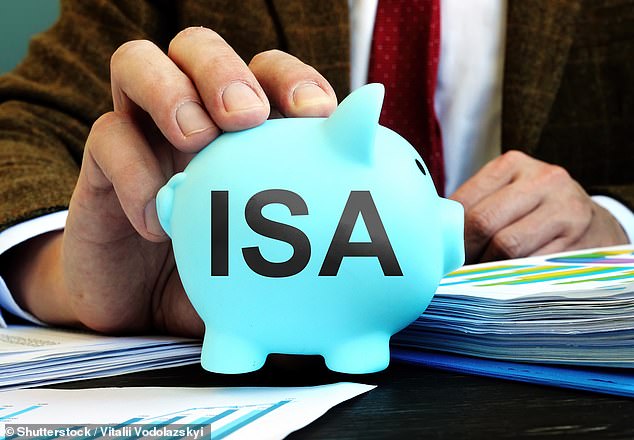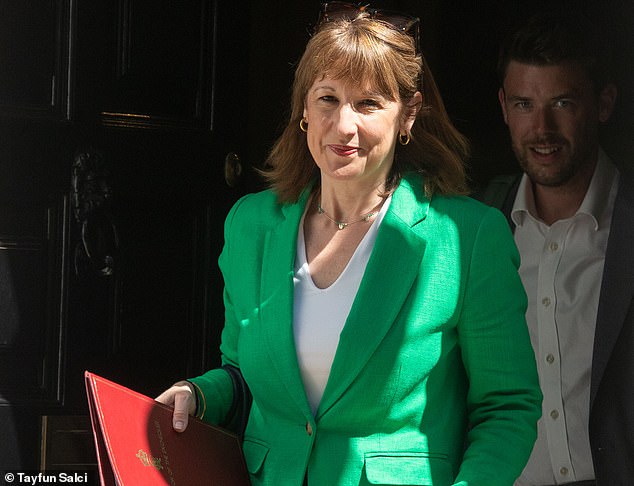Millions of households are bracing themselves for a nasty government pincer movement on their savings that will reduce their financial resilience and result in them paying higher tax bills.
This unprecedented assault on savers will begin later this month when the Chancellor confirms a cut in the annual cash Isa allowance – from £20,000 down to maybe £4,000.
The move, long mooted, will compromise the ability of households to build tax-free cash bunkers for use in later life – and for younger savers to meet short-term goals such as accumulating a deposit for a house purchase.
This will be followed by part two of the pincer: with confirmation from Rachel Reeves in the autumn Budget that the tax-free annual personal savings allowance will remain frozen for yet another year.
The allowance, enabling basic-rate taxpayers to earn up to £1,000 of tax-free interest a year on savings held outside a cash Isa, has remained unchanged since its introduction in April 2016.
The refusal of successive Chancellors to increase it, despite times of strong inflation and rising savings rates, means millions are now routinely paying income tax on a big chunk of their savings.

Pincers out: The Chancellor is set to both cut the annual cash Isa allowance and freeze the tax-free annual personal savings allowance for another year
More will do so in the years ahead if the allowance, £500 for higher-rate taxpayers and zero for additional-rate taxpayers, is not increased.
‘This pincer movement on the country’s savers is so unfair,’ says Anna Bowes, personal finance guru at The Private Office. ‘Cash is the cornerstone of a resilient financial plan. It provides households with a financial cushion, both in the short and long term.’
Absolutely. Here, Money Mail explains what Ms Reeves is up to – and what you can do to mitigate the impending pincer attack on your savings.
Attack on the Cash Isa
On July 15, at a glitzy dinner held at the Mansion House, Ms Reeves will outline her plans for Isa reform.
Currently, adults can save or invest up to £20,000 a tax year in an Isa – with all gains, whether interest on savings, dividend income or profit from share sales, being tax-free.
The Isa has proved extremely popular with savers and investors since its launch in 1999 with £750 billion squirreled away under its tax-free bonnet. Yet Ms Reeves believes not enough of this money is invested, with too many people opting for the security of cash.
If more money was directed into investments, she believes it would boost the UK stock market, fuelling economic growth.
At Mansion House she will confirm a dramatic cut in the amount that can be saved into cash Isas while maintaining the £20,000 allowance for investors. Thankfully, the change will not be implemented immediately, but introduced to coincide with the start of the new tax year in April.
For cash Isa savers, the new allowance could be as low as £4,000 although some City businesses such as trading platform IG want cash Isas ‘scrapped altogether’.
Michael Healy, IG boss, believes the cash Isa is ‘fundamentally broken’ and that if a fifth of the money saved into cash Isas three years ago (£42 billion) had been invested instead – with half going into UK equities – it would have provided a £4 billion boost to UK-listed companies.

Tax haven: The Isa has proved extremely popular with savers and investors since its launch in 1999 with £750billion squirreled away under its tax-free bonnet
That, he adds, would have spawned ‘more jobs, higher wages and better pension returns for British people’.
Yesterday, as temperatures soared at Wimbledon, Mr Healy announced that former champion Pat Cash would be starring in an IG YouTube video to reinforce the message that ‘cash returns just aren’t cutting it any more’. Oh dear.
IG’s view is a minority one, coated in self-interest. A reader poll by This is Money confirms widespread opposition to a cut in the cash Isa allowance with 82 pc saying any reduction would ‘matter’ to them.
The results back Money Mail’s Hands Off Our Cash Isas campaign, launched this year when rumours first surfaced of a possible cut. Most respondents said they would never use an Isa to invest in risky assets.
Many financial companies also believe the cash Isa allowance should not be mutilated in order to nudge people to invest.
‘Supporting economic growth is a worthy goal,’ says Kevin Mountford, co-founder of savings marketplace Raisin UK. ‘But it should not come at the expense of savers who are simply trying to do the right thing with their money.’
Erosion of allowance
Recent U-turns over cuts to the winter fuel payment and disability benefits mean the Chancellor will be looking to generate extra tax revenues come the Budget this autumn.
An easy ‘win’ for Ms Reeves would be an extension of the freeze on the annual personal savings allowance into the next tax year, exposing more people to tax on their non-cash Isa savings.
The allowance – respectively £1,000, £500 and zero for basic, higher and additional-rate taxpayers – has remained unchanged since 2016. Savings interest earnt above these limits is subject to income tax.
Official figures suggest that savers will pay £6 billion in tax on the interest they earn on accounts with building societies and banks in the current tax year – nearly four and a half times what they paid in the tax year ending April 5, 2022.

Backing Britain: Chancellor Rachel Reeves (pictured) believes that not enough money is being invested with too many people opting for the security of cash
A further one-year freeze would yield a similar – if not bigger – tax take for the Chancellor.
Ms Bowes at The Private Office says that when the allowance was introduced, a basic-rate taxpayer could typically shield just short of £69,000 of savings in an easy-access account (paying 1.45 per cent interest) without being hit with a tax bill.
Today, a combination of better savings rates and a ten-year freezing of the allowance means only £20,000 of savings would escape tax (assuming a 5 per cent interest rate).
If the allowance had been increased in line with inflation, it would now be £1,500 for basic-rate taxpayers and £750 for higher-rate taxpayers.
So what can you do?
Although the pincer movement on savers is coming, it has yet to be enforced, so smart households have an eight-month window to protect their savings before Ms Reeves launches ‘Operation Smash Cash’.
The most sensible step is to use as much of the £20,000 cash Isa allowance this tax year as possible – so £40,000 per married couple.
Latest Bank of England figures show that savers poured £3.9 billion into cash Isas in May, meaning they have put more than £50 billion into these accounts since Ms Reeves became Chancellor.
Those approaching retirement – or who are no longer comfortable using their Isa to invest – can also rearrange their Isa furniture.
For example, they can transfer a stocks and shares Isa from a previous tax year into a cash Isa. This transfer would not impact on their Isa allowance for this year.
Investing platform AJ Bell says such transfers might be blocked by the Government come next April if it deems them to be counter to its investment focus.
There is also nothing to stop someone taking out a stocks and shares Isa and then just holding cash. AJ Bell pays 4.32 per cent interest on cash held in its app-only Dodl Isa – and a minimum 1.8 per cent on cash balances within its standard stocks and share Isa. Again, the rules might change come April.
Finally, with regards to the personal savings allowance, structure your household savings so that you maximise its use.
For example, if one partner is a basic-rate taxpayer and the other a higher-rate taxpayer, ensure both allowances (a combined £1,500) are used.
jeff.prestridge@dailymail.co.uk